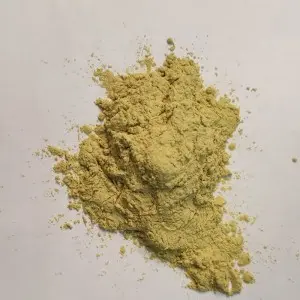Jul . 22, 2024 02:01 Back to list
Optimal Pear Pollination Techniques for Higher Yield and Better Quality Fruits
Exploring the Best Pear Pollen A Guide to Optimal Pollination
When it comes to cultivating pear trees, the significance of pollen cannot be overstated. Pears, like many fruit trees, are dependent on pollinators for optimal fruit production. Understanding the best practices for pear pollen and its role in the fertilization process can greatly impact the yield and quality of the fruit.
Pear trees belong to the genus Pyrus and can be categorized into several species, with the European pear (Pyrus communis) and the Asian pear (Pyrus pyrifolia) being the most commonly cultivated. While many pear varieties are self-fertile, cross-pollination significantly enhances fruit set and size, making the selection of the right pollen partners crucial.
Choosing the Right Pollinator Varieties
The first step in ensuring effective pollination is to select suitable compatible varieties. Most pear species are compatible with others of the same species. For instance, European pears thrive with other European varieties; similarly, Asian pears benefit from cross-pollination with other Asian types. However, not all pear varieties are good pollen donors. To maximize yield, it is essential to choose varieties that bloom simultaneously, ensuring that pollen is available when the flowers are open.
For example, 'Bartlett' and 'Bosc' are two popular European pear varieties that complement each other well and flower at the same time. In contrast, the 'Shinseiki' Asian pear is an excellent pollinator for the 'Niitaka' variety. By planting a diverse array of compatible pear trees, gardeners can enhance the cross-pollination potential and thus improve fruit quality and quantity.
The Role of Pollinators
best pear pollen do

While pears can benefit from human intervention, the role of natural pollinators such as bees cannot be overlooked. Honeybees and bumblebees are particularly effective at transferring pollen between flowers, increasing the chances of successful fertilization. Gardeners should promote a pollinator-friendly environment by planting companion flowers, providing water sources, and avoiding pesticides during the blooming period. A rich biodiverse environment encourages a healthy pollinator population, which, in turn, enhances the pollination of pear blossoms.
Timing and Conditions for Pollination
Timing plays a crucial role in the effectiveness of pollination. Pear trees typically bloom in late spring, depending on the climate and specific variety. Weather conditions during flowering, such as temperature and rain, can influence pollen viability and the activity of pollinators. Ideal conditions for pollination include warm, dry days when bee activity is high. Growers should monitor weather patterns closely and provide additional protections like windbreaks if adverse conditions are forecasted, as strong winds or heavy rain can hinder pollination efforts.
Harvesting and Storing Pollen
For those interested in more controlled pollination methods, harvesting and storing pear pollen for later use is also an option. Pollen can be collected when the flowers are at their peak bloom. Proper drying and storage methods, such as keeping pollen in a cool, dry place, can maintain its viability for several months. This technique allows gardeners to hand-pollinate flowers if natural pollinators are scarce or if specific crosses are desired.
In conclusion, optimizing pear pollination hinges on understanding the importance of pollen selection, creating a hospitable environment for pollinators, and timing practices appropriately. By adhering to these principles, pear tree growers can enhance their chances of a bountiful harvest, producing delicious, juicy pears that delight consumers and contribute to thriving orchards.
-
Premium Apple Tree Pollen for Sale | Boost Fruit Set & Yields
NewsAug.31,2025
-
Pure Cherry Pollen: Boost Fruit Yields with Natural Pollination
NewsAug.30,2025
-
Precision Artificial Pollination: Maximize Crop Yields
NewsAug.29,2025
-
Premium Plant Pollen: Enhance Yields & Boost Research
NewsAug.28,2025
-
Artificial Pollination: Boost Crop Yields Efficiently
NewsAug.27,2025
-
Premium Kiwipollen for Sale | Male Kiwi Pollen Supply
NewsAug.26,2025